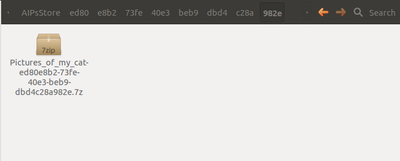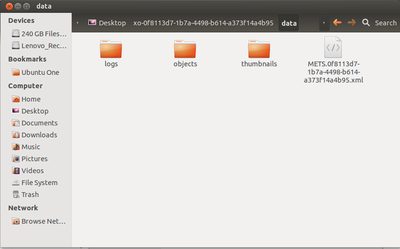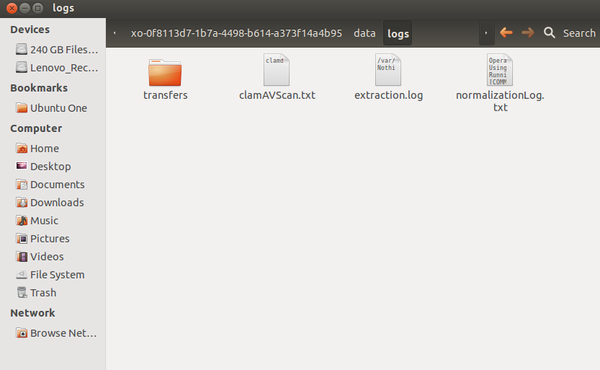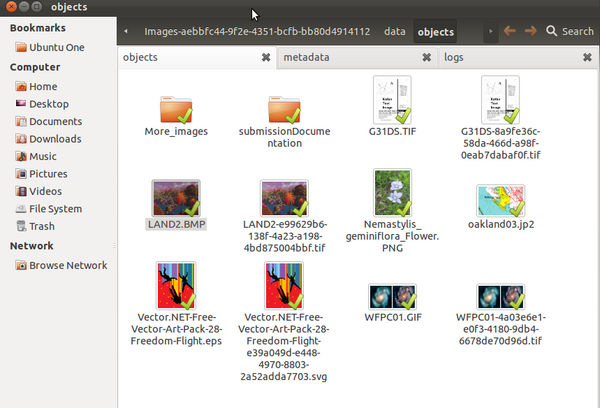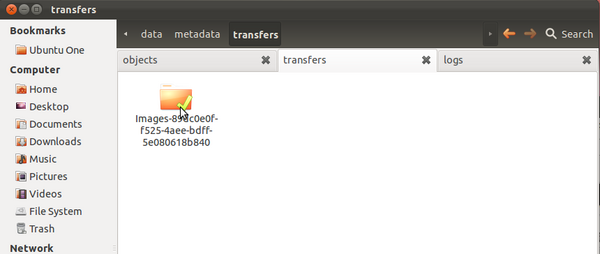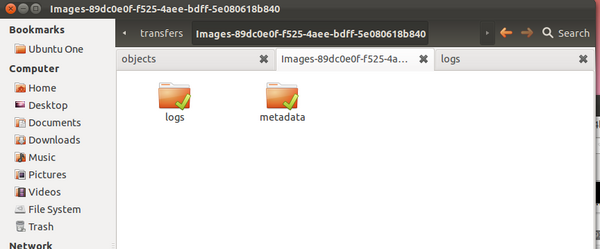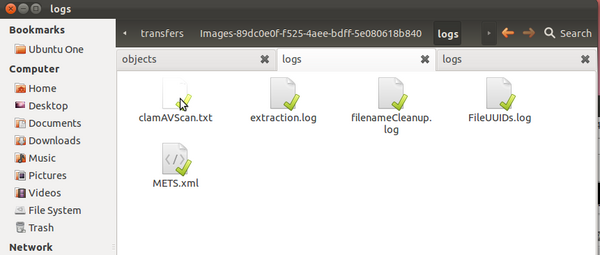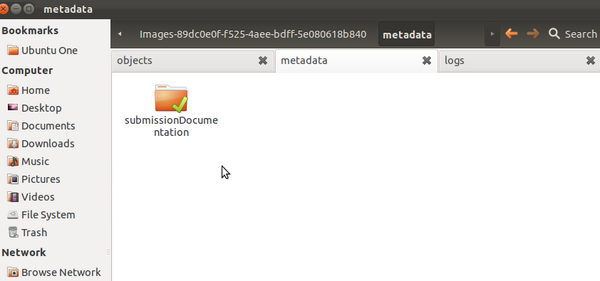AIP structure
Main Page > Development > Development documentation > AIP structure
This page documents the structure of the AIP produced by Archivematica 0.10-beta.
Name
The AIP name is composed of the following:
- Either the name of the original transfer if no new name has been assigned to the SIP upon formation or the name of the SIP or SIPs created from the transfer and
- a UUID assigned during SIP formation
example: Pictures_of_my_cat-aebbfc44-9f2e-4351-bcfb-bb80d4914112
"Pictures_of_my_cat" is the name assigned by the user and "aebbfc44-9f2e-4351-bcfb-bb80d4914112" is the UUID generated during SIP formation.
Directory Structure
- The AIP is zipped in the AIPsStore. The AIP directories are broken down into UUID quad directories* for efficient storage and retrieval. (*UUID quad directories: Some file systems limit the number of items allowed in a directory, Archivematica uses a directory tree structure to store AIPs. The tree is based on the AIP UUIDs. The UUID is broken down into manageable 4 character pieces, or "UUID quads", each quad representing a directory. The first four characters (UUID quad) of the AIP UUID will compose a sub directory of the AIP storage. The second UUID quad will be the name of a sub directory of the first, and so on and so forth, until the last four characters (last UUID Quad) create the leaf of the AIP store directory tree, and the AIP with that UUID resides in that directory.)(figure 1)
BagIt documentation
- The AIP is packaged in accordance with the Library of Congress Bagit specification (PDF, 84KB) In Figure 1, the BagIt files are bag-info.txt, bagit.txt, manifest-sha512.txt and tagmanifest-md5.txt.
Data
The data directory consists of the METS file for the AIP and three folders: logs, objects. and thumbnails. (See Figure 2)
- METS file: /data/METS.uuid.xml contains the full PREMIS implementation (see PREMIS metadata for original file, PREMIS metadata: normalized files, PREMIS metadata: events, and PREMIS metadata: rights The role of the METS file is to link original objects to their preservation copies and to their descriptions and submission documentation, as well as to link PREMIS metadata to the objects in the AIP.
- Logs: /data/logs contains the /transfers directory, normalization log, malware scan log, and the extraction log (from unpackaging packages) generated during SIP creation. (See Figure 3)
- Metadata: /data/metadata contains a folder containing logs from each transfer that makes up the SIP. The METS file for each transfer's original order is contained within the log file for the transfer (see bottom of page at METS for Archivematica transfer).(See Figure 4 ) More information about the contents of the "transfer" file(s) and screenshots in Transfer section below.
- Objects: /data/objects contains original objects, normalized objects and submission documentation. If there were any lower level directories within the SIP, that directory structure is maintained. (See Figure 5 )
The Transfers folder
In the AIP, /data/metadata/transfers contains information about each transfer included in the formation of the SIP. At the top level of the transfer folder, you will see each transfer. Figure 6 shows the contents of the transfers folder from an AIP derived from a SIP made up of only one transfer.
Once you open up a single transfer, you will see logs and metadata folders for that transfer, /data/metadata/transfers/TransferX/logs and /data/metadata/transfers/metadata. (See Figure 7)
The logs folder: /data/metadata/transfers/TransferX/logs contains the malware scan log, extraction log (from unpackaging packages), filename cleanup log, file UUID log, and the METS file that reflects the original order of the transfer before it underwent any arrangement and appraisal actions contributing to the formations of the SIP. (See Figure 8)
The metadata folder: /data/metadata/transfers/TransferX/metadata contains a folder with any submission documentation submitted with the transfer. These files could be donor agreements, transfer forms, copyright agreements and any correspondence or other documentation relating to the transfer. Note that at the top level, within the objects folder, there are copies of this documentation in the submissionDocumentation folder. If this were an AIP made up of SIPs composed of multiple transfers, the objects/submissionDocumentation folder would contain copies of the submission documentation from each of those transfers. Copies of the submission documentation contained in the AIP at the objects/submissionDocumentation level has been normalized for preservation. (See Figure 9)
